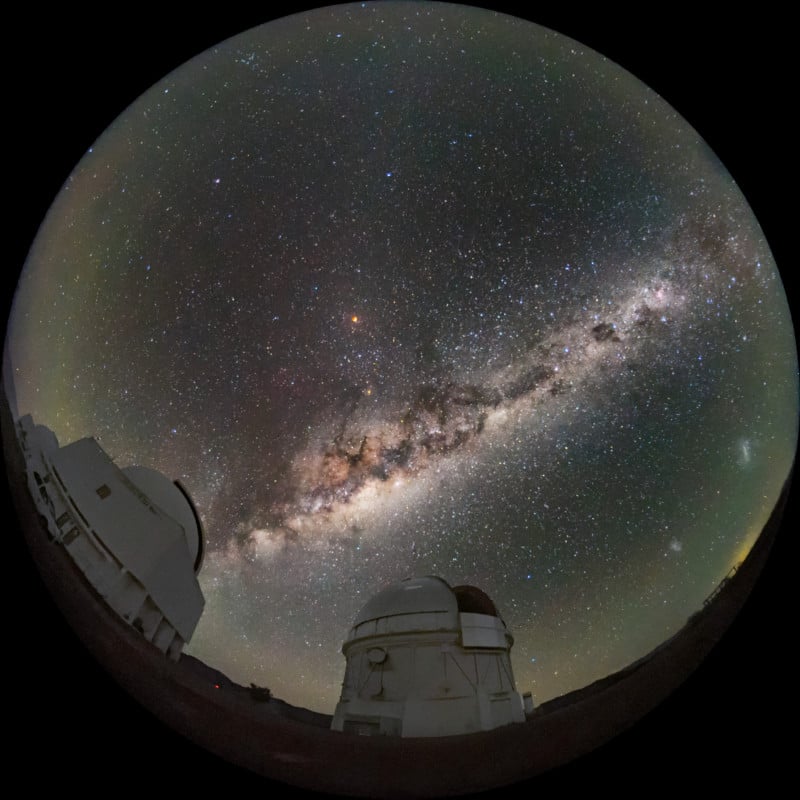Milky Way Explodes Into View During Lunar Eclipse
![]()
A total lunar eclipse wowed viewers around the world this week and in one timelapse video, it can be seen dramatically cutting the light of the night sky to such a degree that the Milky Way suddenly bursts into view.
The awe-inspiring video was captured by the Gemini Observatory’s All-Sky camera at its facilities in Hilo, Hawaii, and shows the moment the eclipse causes the sky to darken and reveal the Milky Way.
The All-sky camera at @GeminiObs South got a pretty good view of the Lunar eclipse last night! Note the very sharp decrease in brightness between 12-17 seconds! #discovertogether #Eclipse #EclipseLunar #Eclipse2022 @NOIRLabAstro @NOIRLabAstroES pic.twitter.com/raOZFa9RyT
— US National Gemini Office (@usngo) May 16, 2022
As reported by Futurism, the Milky Way Galaxy is on show for just three seconds in the timelapse video above, but took place over the course of about an hour in real-time. The powerful telescope located at Gemini Observatory south was able to pick up fine detail in the sky as the eclipse dramatically darkened the view.
The total lunar eclipse occurred on a full moon, which normally would make for an extra-bright night and therefore poor for seeing the Milky Way through the natural light pollution. But as the Earth cut out the light from the Sun that reflects off the moon, the sky dimmed significantly and revealed the galaxy to the camera.
The eclipse was the longest total lunar eclipse visible from the Americas since 1989 and also happened to coincide with a “supermoon,” which occurs when the Moon is at its nearest point to Earth.
When the Earth’s shadow falls upon the surface of the Moon it can sometimes dim it or even turn red, which is why a total lunar eclipse of a full moon is also sometimes referred to as a “Blood Moon.” This red appearance comes from the Moon passing through the Earth’s umbral shadow, as the only light hitting it has passed through the planet’s atmosphere.
It wasn’t just the Gemini Observatory camera that picked out the Milky Way, another photographer posted a picture on Twitter of the Milky Way, Lunar Eclipse, and the Aurora Borealis in one picture.
Milky Way, Lunar Eclipse and the Aurora Borealis in one photo! How can a night get any better?!
Brookdale, Manitoba
11:39PM CST, 05/15/2022@TamithaSkov @TweetAurora @CBCManitoba @ctvwinnipeg @TravelManitoba @TourismWestman pic.twitter.com/DGa8LEtXjd— High Hopes Aurora w/ Justin Anderson (@AuroraJAnderson) May 17, 2022
Meanwhile, astronaut Samantha Cristoforetti photographed the event from her position on the International Space Station.
A camera stationed at the Cerro Tololo Inter-American Observatory in Chile also captured a remarkable picture of the Milky Way galaxy with the lunar eclipse visible in the frame as a large red orb.

The crimson Moon shines above the Milky Way in the center left of the image, while at the bottom of the image are the Víctor M. Blanco 4-meter Telescope (center) and Curtis Schmidt Telescope (left). NOIRLab explains that the eclipse appeared extraordinarily dark in the southern hemisphere as a result of the ash from the 2021 Hunga Tonga–Hunga Ha’apai volcanic eruption.
For those who missed this lunar eclipse, another is scheduled to take place on November 8, 2022 and will be visible in parts of the United States and Asia.